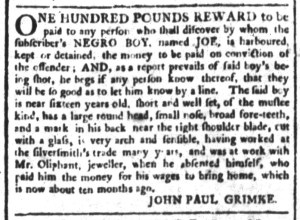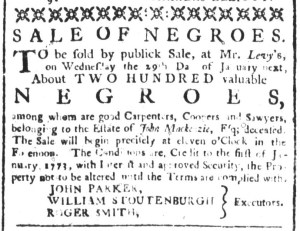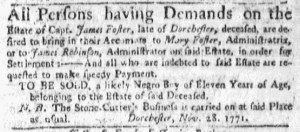What was advertised in a colonial American newspaper 250 years ago today?

“CHOCOLATE … as good and cheap as any in the Government.”
On the final day of 1771, Francis Symonds placed an advertisement in the Essex Gazette to inform the public that he “continueth to entertain Gentlemen and Ladies in the most agreeable Manner” ay the Bell Inn near Salem. In addition, he “hath for SALE a good Assortment of English & West-India Goods.” Symonds devoted the final portion of his advertisement to promoting one item in particular: chocolate. He proclaimed that “he not only grinds, but hath for Sale, in large or small Quantities, CHOCOLATE.” To entice prospective customers, he declared that his chocolate was “as good and cheap as any in the Government.” In other words, consumers would not find chocolate of a higher quality for a lower cost elsewhere in Salem, Boston, or any other town in the colony.
Symonds did not conclude his efforts to win over consumers there. Instead, he continued with a short poem to capture the attention of readers, a precursor to the advertising jingle of the twentieth century. He suggested to readers wondering about the quality and price of his chocolate:
If for Confirmation you incline,
And would have that that’s genuine,
Then please to come and try mine.
Chocolate frequently appeared among the goods listed in advertisements in the Essex Gazette as well as in notices published in newspapers in Boston. Consumers in the region had many choices among purveyors, so Symonds sought to increase the chances that they would acquire chocolate from him rather than his competitors. He hoped that the poem would help to make his chocolate more memorable and more appealing, tempting prospective customers to see for themselves if the product lived up to the promises Symonds made. Most of the advertisements in the Essex Gazette adhered to standard formats, but Symonds and a few others experimented with making their notices more distinctive. Nathaniel Sparhawk, Jr., for instance, used ornamental type to enhance the visual appeal of his advertisement. As an alternative, Symonds relied on text alone, devising a poem unlike anything that appeared in advertisements elsewhere in the issue. Glimpsing something different, readers may have paused to take note.






























